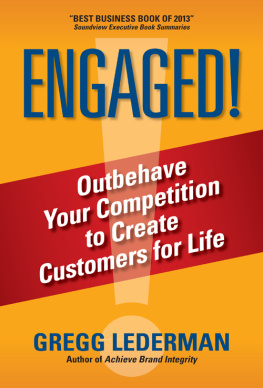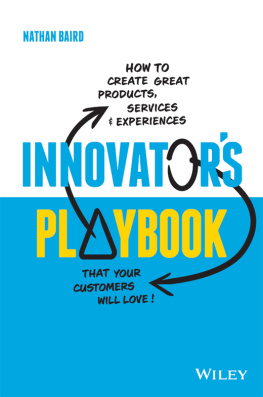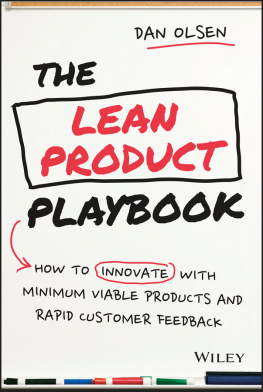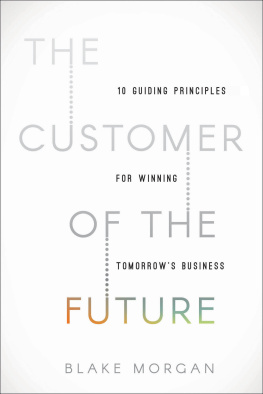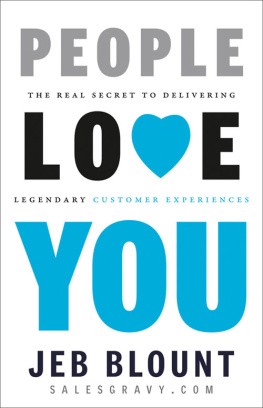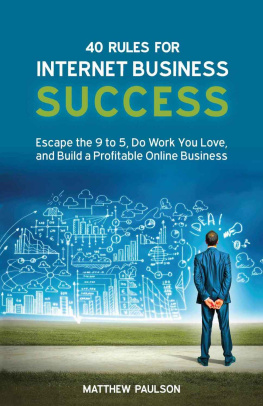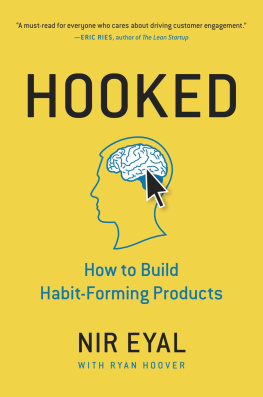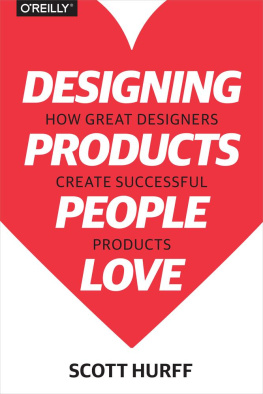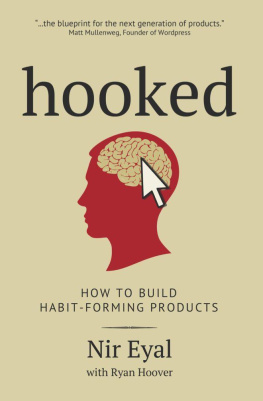
Published by Greenleaf Book Group Press
Austin, Texas
www.gbgpress.com
Copyright 2017 Aha! Labs Inc.
All rights reserved.
Thank you for purchasing an authorized edition of this book and for complying with copyright law. Please do not reproduce, store in a retrieval system, or transmit by any means, electronic, mechanical, photocopying, recording, or otherwise, without written permission from the copyright holder.
All product and company names mentioned herein are trademarks of their respective owners.
Distributed by Greenleaf Book Group
This book is available for bulk purchases at a special discount. For more information, please contact Greenleaf Book Group at PO Box 91869, Austin, TX 78709, (512) 891-6100 or by email at .
Design by Aha! Labs Inc., Greenleaf Book Group, and Sheila Parr
Publishers Cataloging-In-Publication Data
(Prepared by The Donohue Group, Inc.)
de Haaff, Brian.
Lovability : How to build a business that people love and be happy doing it / Brian de Haaff,founder and CEO of AHA!
Austin, Texas : Greenleaf Book Group Press, [2017] | Includes bibliographical references and index.
LCCN 2016955016 | ISBN 978-1-62634-403-7 (print) | ISBN 978-1-62634-404-4 (ebook)
LCSH: Consumer satisfaction. | Customer loyalty. | Product design--Psychological aspects. | Technological innovations. | Success in business. | Love.
LCC HF5415.335 .D44 2016 (print) | LCC HF5415.335 (ebook) | DDC 658.8/343--dc23
Part of the Tree Neutral program, which offsets the number of trees consumed in the production and printing of this book by taking proactive steps, such as planting trees in direct proportion to the number of trees used: www.treeneutral.com

Printed in the United States of America on acid-free paper
17 18 19 20 21 22 10 9 8 7 6 5 4 3 2
For my love, Michelle, and our industrious builders Zachary, Jason, and Noah
CONTENTS

INTRODUCTION
I ride my bike a few times a week through the campus of Stanford University. Its about a mile from my house, and it sits more or less at the epicenter of Silicon Valley both physically and psychologically. Even as a proud graduate of The University of California at Berkeley, I acknowledge that it is one of the most prestigious universities in the world. It also hosted one of the more important speeches on innovation in recent memory.
On March 31, 2016, Securities and Exchange Commission chair Mary Jo White said this to the students of Stanford Law School:
Nearly all venture valuations are highly subjective. But, one must wonder whether the publicity and pressure to achieve the unicorn benchmark is analogous to that felt by public companies to meet projections they make to the market with the attendant risk of financial reporting problems. And, yes that remains a problem. We continue to see instances of public companies and their senior executives manipulating their accounting to meet various expectations and projections.
We have reached a point in the world of technology startups where the fervor for building a company with a billion-dollar valuation the elusive startup unicorn is overshadowing the creation of real value. It is not the first time we have been here; the world of startups and venture capital has always run in cycles, from optimistic zeal to caution to post-catastrophe introspection and back again. But perhaps it is time that entrepreneurs and investors alike begin waking up to the fact that the valuation-at-all-costs model, with its relentless pressure, remote odds of success, and human cost, is not only unsustainable but bad business.
At this point in the current cycle, the radically overvalued startup appears to be headed for the endangered species list. That is a good thing. While billion-dollar behemoths will always exist, and the high-wire act of chasing scale while also chasing the cash to fund that scale will occasionally produce a solid company, there are other ways to build a business. There are better ways to build a business.
A Tale of Two Companies
If you have kids, you are probably tired of hearing about Minecraft, the 3D sandbox role-playing game created by Swedish programmer Markus Notch Persson and released in its full-featured form in 2011. Persson did not create Minecraft because he wanted to create a billion-dollar company; he loved video games and kept his day job while developing it. When the game soared in popularity, he started a company, Mojang, with some of the profits, but kept it small, with just 12 employees.
Even with zero dollars spent on marketing and no user instructions, Minecraft grew exponentially, flying past the 100 million registered user mark in 2014 based largely on word of mouth.
On the other end of the spectrum is Zynga, one of the fastest startups ever to reach a Then the relationship with Facebook ended and the wheels started coming off.
Flush with IPO cash, Zynga started exhibiting all the symptoms of ego-driven, grow-at-any-cost syndrome. They moved into a $228 million headquarters in San Francisco. They began hastily acquiring companies like NaturalMotion, Newtoy, and Area/Code. They infuriated customers by launching new games without sufficient testing and filling them with scripts that signed players up for unwanted subscriptions and services. When customer outrage went viral, instead of focusing on building better products, Zynga hired a behavioral psychologist to try to trick customers into loving its games.
In a 2009 speech at Startup@Berkeley, CEO Mark Pincus said, I funded [Zynga] myself but I did every horrible thing in the book to just get revenues right away. I mean, we gave our users poker chips if they downloaded this Zwinky toolbar, which... I downloaded it once I couldnt get rid of it. We did anything possible just to just get revenues so that we could grow and be a real business.
By the spring of 2016, Zynga had laid off about 18 percent of its workforce and its share price had declined from $14.50 in 2012 to about $2.50.
Back to Basics
Zyngas story provides an important caution, and Minecrafts is a positive sign. We are coming back around to a healthy part of the business cycle where the focus is on building solid products and creating customer value. The founders of would-be high-flying startups are being regarded with greater skepticism while businesspeople who operate like our grandparents did by building on relationships, quality, and value creation are thriving.
The signs of this change are everywhere:
According to The Wall Street Journal, after a two-year funding binge that inflated startup valuations, venture investors have closed their wallets. Funding for U.S. startups fell in the first quarter of 2016 by 25 percent to $13.9 billion, the biggest quarterly decline since the dotcom bubble burst in 2001.
Mutual fund giant Fidelity whispered that unicorns might be mythical when it marked down the value of its holdings in companies like Dropbox, Zenefits, CloudFlare, and DocuSign in early 2016. A Bloomberg article about the write-downs said, Investors still have high hopes for corporate software companies to go public this year. But in some cases, the expectations may have lost touch with reality at many startups raising money in 2014 and 2015.
In his March 2016 Term Sheet
Next page

